Month: April 2019
Programming Note
I’ve belatedly upgraded to the current version of WordPress and things are a little hinky. Nothing huge, but some hiccups need ironing out. Hold tight!
Nero’s Domus Transitoria opens to public
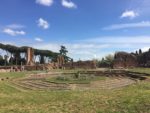 Nero was so closely associated with his insanely huge Golden Palace on the Oppian Hill that his previous abode, the Domus Transitoria, was entirely eclipsed by its successor. It was called the Transit House because it extended from the Esquiline to the Palatine so the imperial family could move from one hill to the other moving solely through the buildings, gardens and pools of his private 9,000 square foot palace. It too was constructed of opulent materials from patrician estates that had gradually fallen into imperial hands and was considered obscenely luxurious when it was built in the 50s A.D. It burned down in fire of 64 A.D. and Nero took advantage of the destruction of large swaths of the city to build the Domus Aurea by way of replacement.
Nero was so closely associated with his insanely huge Golden Palace on the Oppian Hill that his previous abode, the Domus Transitoria, was entirely eclipsed by its successor. It was called the Transit House because it extended from the Esquiline to the Palatine so the imperial family could move from one hill to the other moving solely through the buildings, gardens and pools of his private 9,000 square foot palace. It too was constructed of opulent materials from patrician estates that had gradually fallen into imperial hands and was considered obscenely luxurious when it was built in the 50s A.D. It burned down in fire of 64 A.D. and Nero took advantage of the destruction of large swaths of the city to build the Domus Aurea by way of replacement.
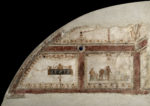 The first remains of the Domus Transitoria were discovered in 1721 by the noble Farnese family. Like with the Domus Aurea, it was the surviving frescoes that caught the eye, their small fantastical details inspiring artists in the grottesque style. The Farnese helped themselves to whatever they wanted and what they wanted was those frescoes. They were chiseled off the walls and wound up in the collection of the Archaeological Museum of Naples. Most of what’s left of the palace — a triclium surrounded by porphyry columns, opus sectile floors, vaulted ceilings, an elegant nymphaeum, a communal latrine facility that sat 50 and is believed to have been built for the work crews who built the Domus Aurea after the fire — was excavated by Giacomo Boni in the 1910s.
The first remains of the Domus Transitoria were discovered in 1721 by the noble Farnese family. Like with the Domus Aurea, it was the surviving frescoes that caught the eye, their small fantastical details inspiring artists in the grottesque style. The Farnese helped themselves to whatever they wanted and what they wanted was those frescoes. They were chiseled off the walls and wound up in the collection of the Archaeological Museum of Naples. Most of what’s left of the palace — a triclium surrounded by porphyry columns, opus sectile floors, vaulted ceilings, an elegant nymphaeum, a communal latrine facility that sat 50 and is believed to have been built for the work crews who built the Domus Aurea after the fire — was excavated by Giacomo Boni in the 1910s.
 The Domus Transitoria has never been open to visitors before, but after a decade-long program of structural reinforcement and renovation, you can now descend into the ruins of palatial rooms and gardens that were once ground level. As with the phenomenal Domus Aurea tour, there’s a virtual reality component here too.
The Domus Transitoria has never been open to visitors before, but after a decade-long program of structural reinforcement and renovation, you can now descend into the ruins of palatial rooms and gardens that were once ground level. As with the phenomenal Domus Aurea tour, there’s a virtual reality component here too.
Visitors receive virtual reality goggles which bring the dank chambers to life, showing them as they were 2,000 years ago – part of a huge palace decorated with marble pillars, lavish frescoes, mosaic floors and fountains.
The walls were painted with garden scenes, including trees, flowers and song birds.
Inspiration for the design of the sumptuous residence came from a palace built for the Egyptian pharaoh Ptolemy in Alexandria, said Alfonsina Russo, the director of the archeological zone that encompasses the Roman Forum, the Colosseum and the Palatine Hill.
“It reflects the personality of Nero, one of the most controversial figures of the Roman Empire,” said Prof Russo.
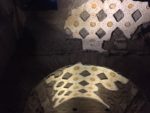 The Archaeological Museum of Naples has loaned the frescoes looted from the palace in the 18th century for the reopening. The Palatine Museum just a few steps away has a few frescoes of its own removed in the 1950s as well as statues and other decorative pieces recovered from the Domus Transitoria.
The Archaeological Museum of Naples has loaned the frescoes looted from the palace in the 18th century for the reopening. The Palatine Museum just a few steps away has a few frescoes of its own removed in the 1950s as well as statues and other decorative pieces recovered from the Domus Transitoria.
The tour of the Domus is included in the new Roman Forum-Palatine ticket (16 euro) which is valid for a day. The Domus Transitoria can only be visited from Friday to Monday. Included in the price of the ticket is entry to the Palatine Museum, the Neronian Cryptoporticus, the Domus of Augustus, the Domus of Livia, the Temple of Romulus, Santa Maria Antiqua and the imperial ramp of Domitian. You have no idea how hard I tried to get into Santa Maria Antiqua and Domitian’s ramp my last two visits to Rome. No one’s keeping me away next time.
Stolen de Kooning conservation, plus a crazy twist
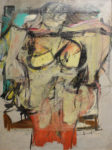 Woman-Ochre, the hugely valuable painting stolen from the University of Arizona Museum of Art in 1985 and rediscovered in the modest home of a New Mexico couple after their estate was sold in 2017, is being restored by conservators at the Getty Museum and specialists at the Getty Conservation Institute. Cut out of its frame and rolled up by the thieves, then crudely stapled to a frame, the canvas was in poor condition when it was recovered. The University of Arizona has wisely decided to bring in the heavy artillery in the form of Getty experts.
Woman-Ochre, the hugely valuable painting stolen from the University of Arizona Museum of Art in 1985 and rediscovered in the modest home of a New Mexico couple after their estate was sold in 2017, is being restored by conservators at the Getty Museum and specialists at the Getty Conservation Institute. Cut out of its frame and rolled up by the thieves, then crudely stapled to a frame, the canvas was in poor condition when it was recovered. The University of Arizona has wisely decided to bring in the heavy artillery in the form of Getty experts.
The Getty is well versed in the work of de Kooning, whose idiosyncratic working methods have created intense speculation and debate among conservators and art historians, primarily from visual inspection and anecdotal accounts rather than rigorous technical analysis. In 2010, the Conservation Institute worked closely with Susan Lake, then head of collection management and chief conservator at the Hirshhorn Museum and Sculpture Garden in Washington D.C., on an in-depth study of de Kooning’s paintings from the 1940s through the 1970s, published by the Getty as Willem de Kooning: The Artist’s Materials.
The Getty-University of Arizona project will also be a teaching tool, providing access and information to graduate-level conservation and science students at local universities as well as those from the University of Arizona.
The restoration begins this month and is expected to take about two years. The painting will be briefly displayed at the Getty Museum in 2020 before returning home to the University of Arizona.
In the meantime, the investigation into the theft continues. The FBI won’t comment on the case until they’ve completed their investigation, but there is new information from non-law enforcement sources, and y’all, this is a crazy, CRAZY story.
Quick recap: November 29th, 1985, the day after Thanksgiving, a man and a woman entered the UofA Museum of Art in Tucson. The woman distracted the security guard while the man cut Woman-Ochre out of its frame, rolled it up and hid it under a coat. Fifteen minutes after walking in the door, the couple walked out and neither they nor the painting they stole were seen again for 32 years.
In August of 2017, David Van Auker, Buck Burns and Rick Johnson, owners of Manzanita Ridge Furniture & Antiques in Silver City, New Mexico, bought a bunch of stuff from the estate of Jerry and Rita Alter in Cliff, New Mexico, for $2000. Jerry, a retired music teacher, had died in 2012. Rita, a retired speech pathologist, died in June 2017. After her death, her nephew and executor of the estate, Ron Roseman, put the contents of their house up for sale.
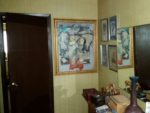 It was customers of Manzanita Ridge Furniture & Antiques commented that the de Kooning sure looked a lot like a real one. A little Googling and a call to the University of Arizona and the next thing you know, its authenticity was confirmed and the painting was on its way back to Tucson.
It was customers of Manzanita Ridge Furniture & Antiques commented that the de Kooning sure looked a lot like a real one. A little Googling and a call to the University of Arizona and the next thing you know, its authenticity was confirmed and the painting was on its way back to Tucson.
The rediscovery of a painting that a conservative estimate based on past sales of works from the series would value at something in the neighborhood of $150 million in a little ranch house in rural New Mexico made big news, of course. How had the Alters acquired it? Nobody in their family knew anything about it. It was hanging in their bedroom blocked by the door and could only been seen from inside the room. Ron Roseman didn’t even know it existed until January of 2017 when he was helping out his aunt as she struggled with dementia in her final months.
After the find made the press, Ron found an interesting photo when going through some old family pictures. It was of his aunt and uncle smiling as they spent Thanksgiving of 1985 with family. In Tucson. This is that picture:

This is a composite sketch of the thieves published in the Arizona Daily Star of December 5th, 1985:
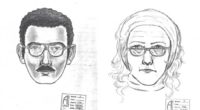
The getaway car was a rust color. Except for one blue one at a different time, the Alters only owned red cars. The painting only shows evidence of having been reframed once after the theft, an amateur hack job using a commercial pre-made frame, not custom work. Van Auker said it was coated in thick dust and that the frame’s outline was marked on the wall when he removed it. He’s sure the painting had been fixed in that place for decades.
Yeah. And it gets crazier.
The Alters wrote three books together, one about traveling, another about poetry and a twist on Aesop’s Fables.
“The Cup and The Lip: Exotic Tales” features fictional accounts of travel adventures. In one story, “Eye of the Jaguar,” a grandmother and her granddaughter case a local city museum and then return to steal its prize exhibit, a 120-carat emerald.
The thieves leave behind no clues. The jewel is kept hidden “several miles away” from the museum, behind a secret panel, “and two pairs of eyes, exclusively, are there to see!” he wrote.
No fingerprints were left at the scene of the crime. There was no security video in the museum at that time. There is no hard evidence to be found more than three decades after Woman-Ochre was purloined. But it sure does look like the Alters might just have done the unthinkable and pulled a massive heist for the sheer pleasure of looking at an abstract expressionist nude until the day they died. Is it weird that I can’t help but admire that a little? I mean, I can’t deny having fantasized about snagging some amazing artifact or artwork and cooing over it in secret for centuries as it shriveled me up and extended my life unnaturally like Gollum.
Marie Antoinette’s rooms reopen at Versailles
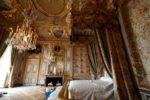 In January of 2016, the Queen’s State Apartment, the grand rooms occupied by the Queens consort of France from Louis XIV’s wife Maria Theresa to the doomed Marie Antoinette, were closed to the public as part of the “Grand Versailles” project, a massive 17-year, €500 million program to restore, upgrade and improve the buildings and grounds of the palace. The Queen’s rooms were in need of significant conservation and upgrades to the fire safety systems, utility networks, air treatment and climate control.
In January of 2016, the Queen’s State Apartment, the grand rooms occupied by the Queens consort of France from Louis XIV’s wife Maria Theresa to the doomed Marie Antoinette, were closed to the public as part of the “Grand Versailles” project, a massive 17-year, €500 million program to restore, upgrade and improve the buildings and grounds of the palace. The Queen’s rooms were in need of significant conservation and upgrades to the fire safety systems, utility networks, air treatment and climate control.
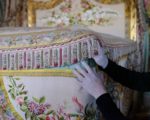 The four adjoining rooms — the Queen’s Guard Room, the Royal Table Antechamber, the Nobles’ Room and the Queen’s Bedchamber — had been hard done by heat. King Louis-Philippe (r. 1830- 1848), seen here turning into a pear, had heaters blowing in the palace that were way too hot and couldn’t really be controlled. The heat of the summer was bad enough, raising the temperature at the highest point under the ceilings to 115F. A new climate-adaptive air system was installed with humidity regulation controls.
The four adjoining rooms — the Queen’s Guard Room, the Royal Table Antechamber, the Nobles’ Room and the Queen’s Bedchamber — had been hard done by heat. King Louis-Philippe (r. 1830- 1848), seen here turning into a pear, had heaters blowing in the palace that were way too hot and couldn’t really be controlled. The heat of the summer was bad enough, raising the temperature at the highest point under the ceilings to 115F. A new climate-adaptive air system was installed with humidity regulation controls.
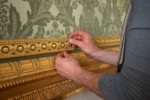 After more than three years of painstaking labour, the Queen’s State Apartment will reopen on April 16th. In order to replace the ductwork and pipes behind the walls, the decorative woodwork had to dismantled, bronzes and textiles removed. Carpenters, goldsmiths, the silk weaving house of Tassinari and Chatel and many other artisans and trades were involved in the reconstruction and restoration.
After more than three years of painstaking labour, the Queen’s State Apartment will reopen on April 16th. In order to replace the ductwork and pipes behind the walls, the decorative woodwork had to dismantled, bronzes and textiles removed. Carpenters, goldsmiths, the silk weaving house of Tassinari and Chatel and many other artisans and trades were involved in the reconstruction and restoration.
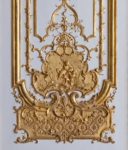 Extensive studies were undertaken to recreate the original paint schemes, restore textiles and other decorative elements. The rocaille decorations on the wall, a trompe-l’oeil technique that used plaster, rock and seashells to create the illusion of gilded swirls, crests and cupids, created for Marie Leszczynska, wife of Louis XV, was rediscovered under thick layers of overpaint. The delicate blue grey background paint has been restored making the faux gilded elements stand out again. A grisaille allegory by François Boucher’s representing the queenly virtues of charity, piety, liberality and prudence was restored to its original softness as well with the removal of discolored overpaintings and varnishes that had left the figures looking yellowed and flat.
Extensive studies were undertaken to recreate the original paint schemes, restore textiles and other decorative elements. The rocaille decorations on the wall, a trompe-l’oeil technique that used plaster, rock and seashells to create the illusion of gilded swirls, crests and cupids, created for Marie Leszczynska, wife of Louis XV, was rediscovered under thick layers of overpaint. The delicate blue grey background paint has been restored making the faux gilded elements stand out again. A grisaille allegory by François Boucher’s representing the queenly virtues of charity, piety, liberality and prudence was restored to its original softness as well with the removal of discolored overpaintings and varnishes that had left the figures looking yellowed and flat.
 Two exhibitions will open in the rooms on Tuesday dedicated to three queens who called this apartment home and gave birth to 19 princes and princesses of France there. Marie Antoinette has the biggest name recognition, but Marie Leszczynska (who I know almost nothing about beyond the fictionalized account in the awesomely entertaining and even more awesomely confusing anime Le Chevalier D’Eon) is finally getting a little attention too, as is Madame de Maintenon, morganatic wife of Louis XIV.
Two exhibitions will open in the rooms on Tuesday dedicated to three queens who called this apartment home and gave birth to 19 princes and princesses of France there. Marie Antoinette has the biggest name recognition, but Marie Leszczynska (who I know almost nothing about beyond the fictionalized account in the awesomely entertaining and even more awesomely confusing anime Le Chevalier D’Eon) is finally getting a little attention too, as is Madame de Maintenon, morganatic wife of Louis XIV.
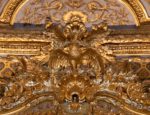 On a technically unrelated but in a weird way related note, the palace will be throwing a rave this summer in the Halls of Mirrors. It’s a celebration of French electronica label Ed Banger Records and will feature the label’s top four DJs spinning at the foot of the Hall of the Mirrors to the delight of crowds grinding it out on a massive dance floor that will be erected on the terraces of the Château de Versailles overlooking its impeccable gardens. Grab your gilded pacifiers and most rococo glow sticks and book your tickets for the June 8th event here.
On a technically unrelated but in a weird way related note, the palace will be throwing a rave this summer in the Halls of Mirrors. It’s a celebration of French electronica label Ed Banger Records and will feature the label’s top four DJs spinning at the foot of the Hall of the Mirrors to the delight of crowds grinding it out on a massive dance floor that will be erected on the terraces of the Château de Versailles overlooking its impeccable gardens. Grab your gilded pacifiers and most rococo glow sticks and book your tickets for the June 8th event here.
Also, Google Arts & Culture has a nifty online exhibit called Sciences at Versailles that uses artworks and objects to explore the role technology, engineering, astronomy, geography and other scientific pursuits played at the courts of Louis XIV and his successors.
Sciences at Versailles chapter 1: science & power
Sciences at Versailles chapter 2: astronomy, queen of sciences
Sciences at Versailles chapter 3: discovering new worlds, geography
Sciences at Versailles chapter 4: cascade creation, water engineering
Sciences at Versailles chapter 5: botany & zoology, a taste for exoticism
Sciences at Versailles chapter 6: fit for a king, medicine and surgery
Sciences at Versailles chapter 7: the science show, physics and chemistry
Sciences at Versailles chapter 8: mechanics, automatons and hot-air balloons